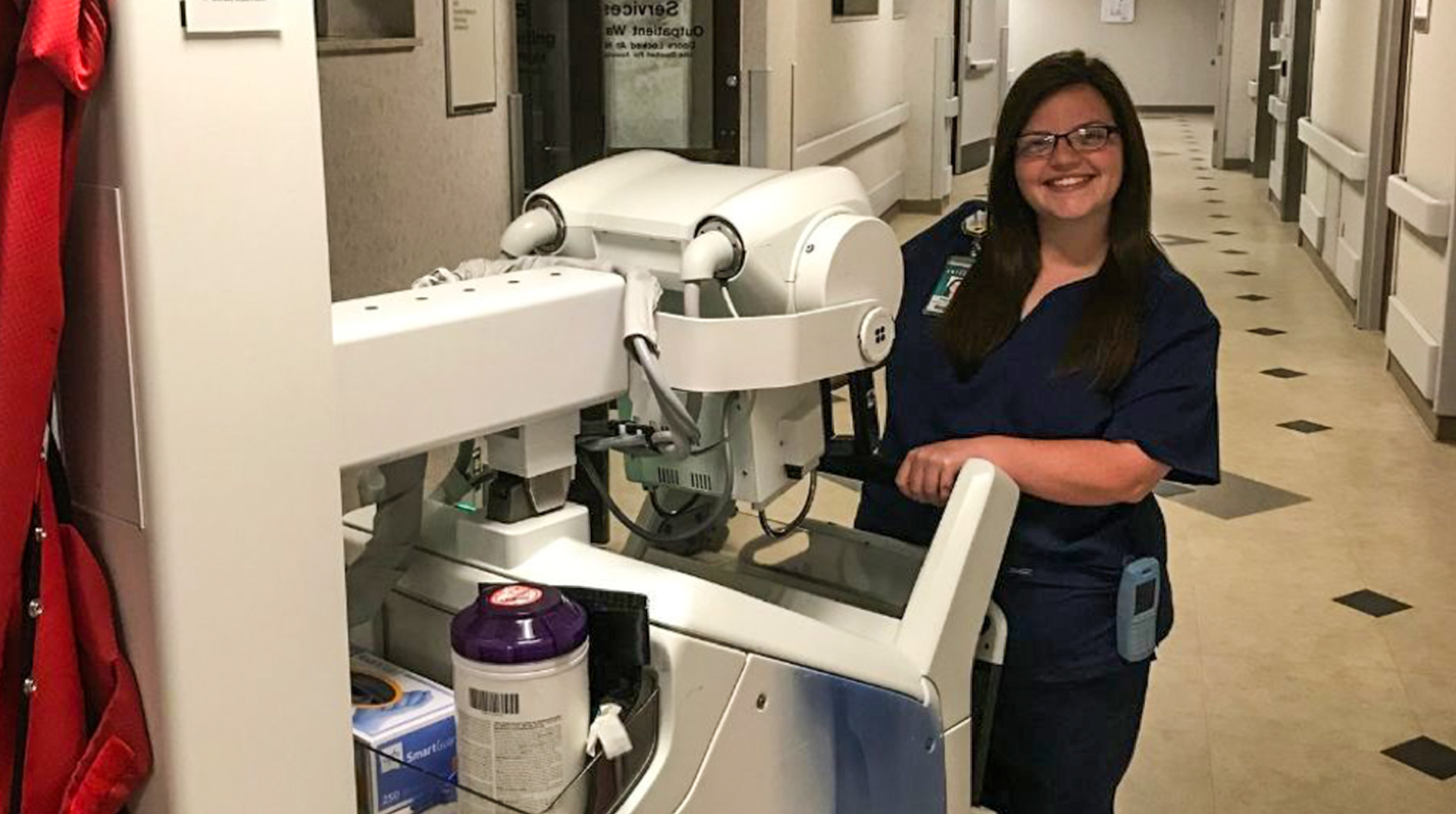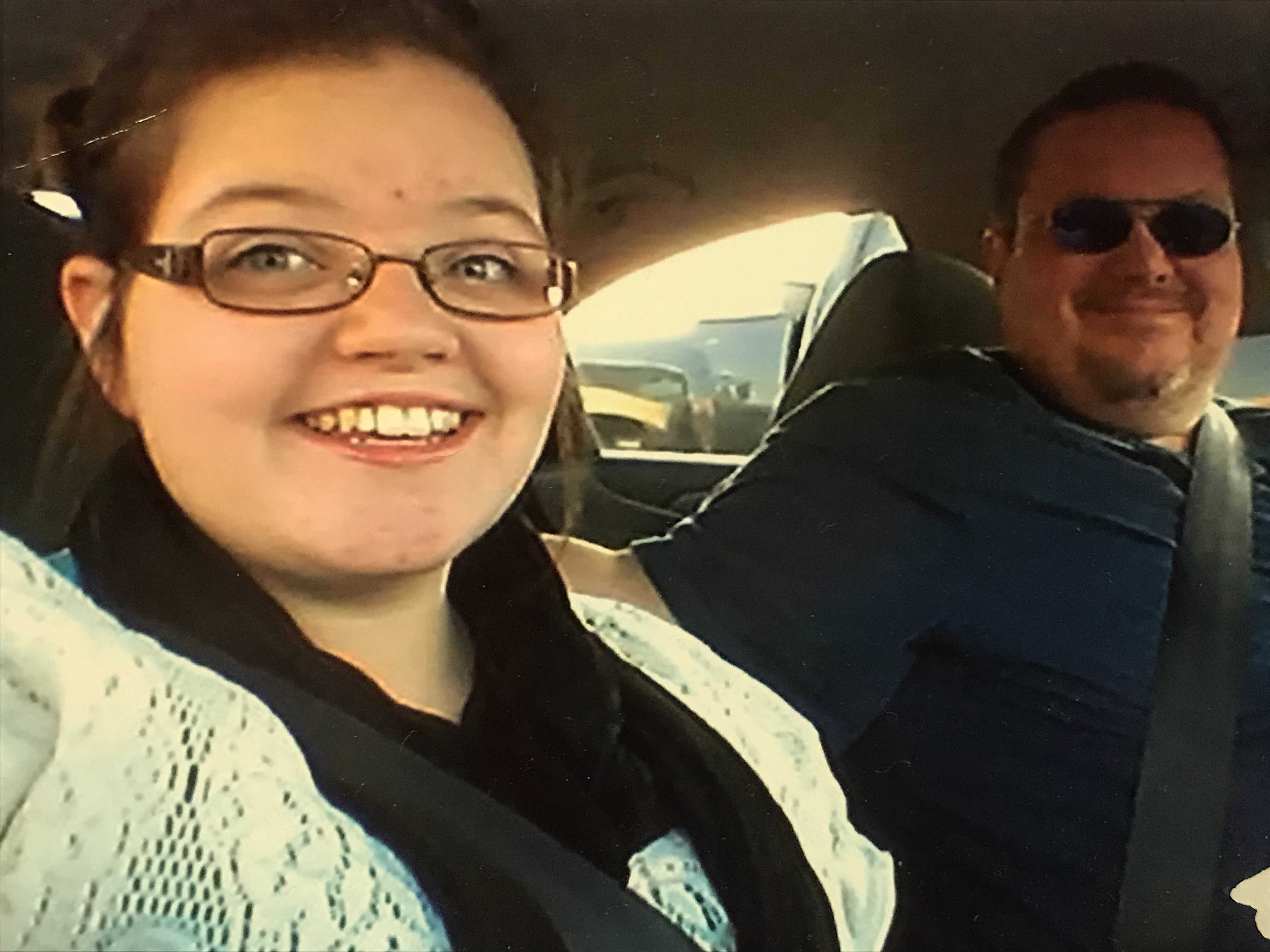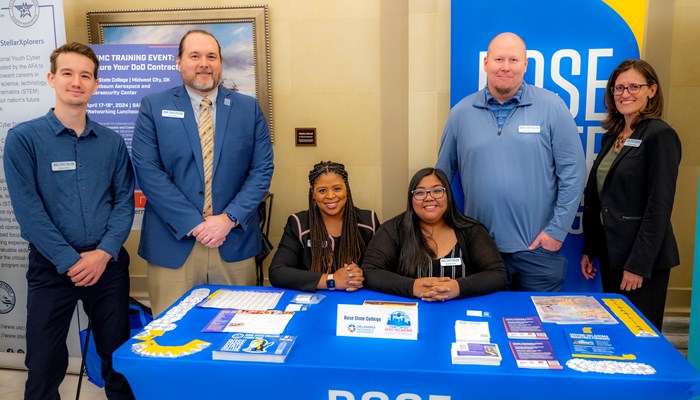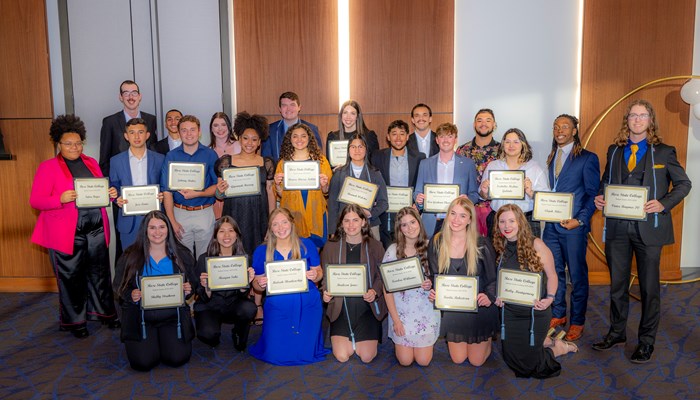Legacy Student Uses Radiologic Technology Program To Honor Late Father Published December 17, 2019
 A pair of old X-ray markers is all Kayla Wiggins needs to brighten her day.
A pair of old X-ray markers is all Kayla Wiggins needs to brighten her day.
To the naked eye, these small rectangles, used by radiologic technologists during the imaging process to dictate and notate the left or right side of the body, don’t offer much significance. For Kayla, they serve as a reminder of why she’s at Rose State College in the first place. But, primarily, they are a much-needed beacon of light to warm her heart in honor of her late father, Terry Wiggins.
“It reminds me that he's with me and that I can do this, especially on rough days during clinic when it's nonstop,” says Kayla, referring to her father’s old markers. “That always gets me. Then I think, ‘He's here and I can do this.’ It keeps me at peace.”
The markers were especially nostalgic this summer, when Kayla received her Radiologic Technology Associate in Applied Science Degree from Rose State almost three years to the day of Terry’s death on July 31, 2016.
Naturally, talk of Terry’s physical absence elicits emotion, both as a parental figure and the inspiration for Kayla’s long-withstanding interest in the field as a legacy student. Terry graduated from Rose State in 1991 and spent more than two decades as an X-ray tech.
“The embraced hug is probably what I'll miss the most just because of the comfort and security and the 'Hey, I'm proud of you — you did it, congratulations type of thing,’” says Kayla, referring to walking across the stage at graduation. “To have his arms wrapped around me one last time is probably what I'll be thinking about.” 
A Family Atmosphere
Kayla’s love for radiologic technology didn’t spawn overnight. It’s years in the making — fifth or sixth grade, to be exact.
Father-daughter days at Community Hospital in southwest Oklahoma City sparked Kayla’s interest. The work itself was interesting, as was the ability to help others.
Later on, math and science classes, including college prerequisites in anatomy and physiology, enabled her to excel in the medical field. And as if she needed any added affirmation, a job several years ago as a receptionist at Integris Southwest Medical Center reminded her a hospital setting and the radiology department is where she needed to be.
While Terry never saw Kayla’s acceptance into Rose State — the same program that launched a 24-year career in the field — she knows he’s watching over her.
“He was always super excited. Whenever he tried to talk to me previously about anything X-ray, I didn't quite understand because I wasn't in the program at that time,” Kayla says. “I'm kind of kicking myself now, like I should have paid attention to what he was saying. I never quite thought I'd make it, but here I am.
“I know he's there to support me. It's just different when he's not physically here — asking him questions, learning things from him (tips and tricks), words of wisdom, and how to survive.”
The legacy goes beyond Kayla and Terry navigating their way through the program nearly 30 years apart. Terry also served as an adjunct professor at Rose State. His role as a clinical instructor meant he went on site to review competencies such as the technique used when performing a chest X-ray, evaluating criteria, and ensuring the imaging met diagnostic quality.
This year, Rose State faculty dug up Terry’s old work documents, which gave Kayla a further glimpse into the profession he loved. She’s also interacted with Terry’s former classmates and coworkers during her clinical rotations.
“Meeting those people brought joy to my heart. They always told me funny and entertaining stories about how he was in class, in the clinic, and at work. Just a funny, happy-go-lucky guy who always had a smile on his face. He enjoyed joking around with others and making patient care his No. 1 priority.”
Rose State Can Help Launch Your Career
A career in radiologic technology is more advanced than simply pushing a few buttons on a machine, as Kayla quickly found out. In basic terminology, they run diagnostic imaging to document images so radiologists can make an accurate diagnosis. They are educated in radiation safety, patient care, and examination techniques.
Creativity is key. You need to think of various positions and angles — two images, 90 degrees from each other is what radiologists prefer — to produce diagnostic images.
“I'm sure it's easy. My dad can do it, so anybody can do it,” Kayla says of her initial thoughts. “I had a rude awakening during boot camp, which is what they call the first eight weeks of our first semester. It was rough.”
But Kayla soon learned of Rose State’s perks. She made it through the first two months and pushed through knowing how valuable those moments would be in the long run. She learned problem-solving skills and how to be accountable, productive, and responsible.
The draw of Rose State, and the radiologic technology field in general, isn’t limited to interacting with patients and performing a chest X-ray. There are many modalities students can go into once they complete the program. Some may stay in X-ray, while others can venture into careers as surgery techs,, MRI technologists, or performing interventional procedures.
“Rose State is very thorough. I go to the clinic and I work with other students from area colleges, and I see a difference in how our students act compared to theirs,” she says. “Techs and supervisors say they would rather have and/or hire Rose State students over any other program as well. We are thorough and more knowledgeable when we go out to the clinic.”
Rose State’s Benefits Are Never-ending
The endless career options are what makes the program attractive and exciting. In fact, Kayla’s considering continuing on with a bachelor's degree. She also plans to cross-train to learn about CT scans. In the next 10 years, she hopes to take a supervisory or managerial role.
The occupational outlook is noteworthy, too. A radiologic technology career carries a median annual wage of $59,520, with the highest 10% earning $86,350. The United States Bureau of Labor Statistics projects 12.3% job growth from 2016 to 2026, faster than the average for all occupations. The BLS identified the following five areas with the highest median wage as of 2018:
- Federal government, excluding postal service - $65,230
- Outpatient care centers - $61,480
- Hospitals; state, local, and private - $60,700
- Medical and diagnostic laboratories - $60,200
- Offices of physicians - $53,990
Kayla recently started working the night shift at Integris Southwest Medical Center as an X-ray tech. This reaffirmed her passion for working in the emergency room. Kayla enjoys how each case is different. Clinical rotations in the ER opened her eyes to how fast-paced the industry can be. The hands-on experience is a crucial part in the development of Rose State students.
“The benefits are never-ending of going to Rose State and going through their program,” she says. “I enjoy the patient part of it. Just taking care of people is a hobby of mine. I like to be a caretaker.”
About Rose State’s Radiologic Technology Program
Rose State’s program is 86 credit hours. Once you handle basic prerequisites, the degree track includes fall, spring, and summer coursework completed in two years..
Rose State’s quality faculty aided in Kayla’s learning. She lauded the efforts of Jonnye Griffin, Director of Radiologic Technology, Barbara Reding, Clinical Coordinator/Professor, and professor Katie Holloway.
Specifically, Kayla thanked Griffin and Holloway for their hard work and dedication and Reding for her knowledge and motivational techniques. Reding handles scheduling, clinical rotations, and helps students prepare for their competencies.
“She's strict, but it's for the better outcome of you and your overall patient care,” Kayla says. “She wants you to be the best tech. I feel Barbara deserves a big round of applause for everything she does for the program.”
In 2017, Rose State College’s Radiologic Technology Program was re-accredited by the Joint Review Committee on Education in Radiologic Technology (JRCERT). Why is this important? JRCERT accreditation offers a means of assurance to the public that a program meets specific objectives. The accreditation elevates the quality and safety of patient care and accuracy in complex laboratory results.
About 20 students enroll in Rose State’s program annually. Coursework prepares students for the American Registry of Radiologic Technologist credentialing examination. This exam is a stamp of approval that recognizes qualified individuals in radiologic technology. The ARRT graduate pass rate is 100%.
“Most hospitals in the metro area and throughout the state require you to be a registered RT. You have to take a test and that confirms you're competent in doing X-rays,” she says. “It’s a great honor at that point and making my dad proud of what I've become will be really heartfelt for me.”
Interested in radiologic technology or the more than 60 academic programs offered at Rose State College? Visit our FAQ page to learn more about the program. You can contact us using this form, or if you’re ready to get started, apply today.



